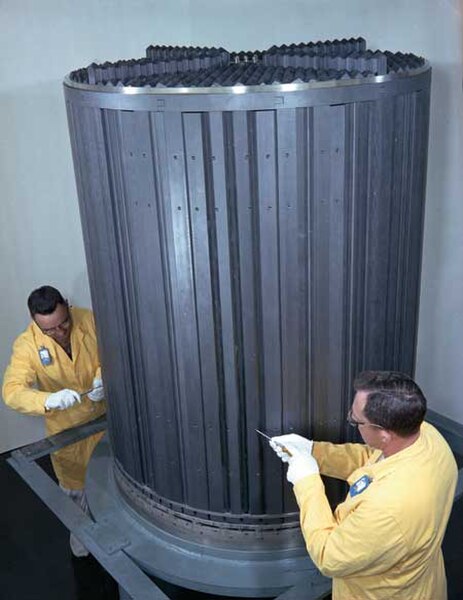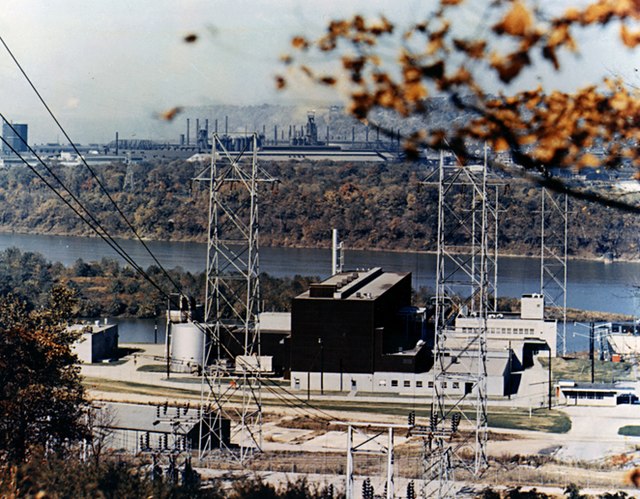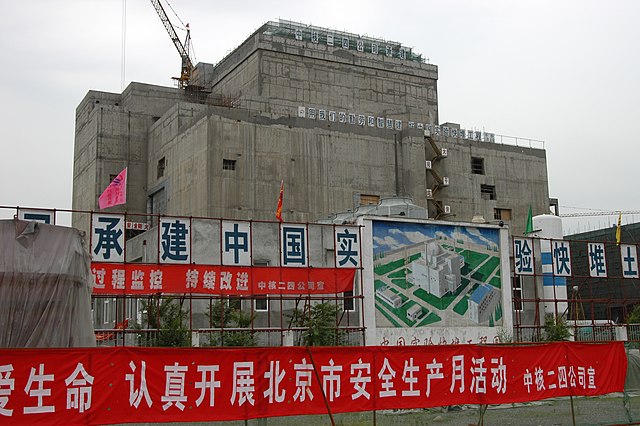Phénix was a small-scale prototype fast breeder reactor, located at the Marcoule nuclear site, near Orange, France. It was a pool-type liquid-metal fast breeder reactor cooled with liquid sodium. It generated 590 MW of thermal power, and had a breeding ratio of 1.16, but normally had to be stopped for refueling operations every two months. Phénix continued operating after the closure of the subsequent full-scale prototype Superphénix in 1997. After 2004, its main use was investigation of transmutation of nuclear waste while also generating some electricity. Phénix was shut down in 2009.
Phénix
The Marcoule site, with the Phénix reactor on the very left side (red-white chimney) (2013)
A breeder reactor is a nuclear reactor that generates more fissile material than it consumes.
These reactors can be fueled with more-commonly available isotopes of uranium and thorium, such as uranium-238 and thorium-232, as opposed to the rare uranium-235 which is used in conventional reactors. These materials are called fertile materials since they can be bred into fuel by these breeder reactors.
Experimental Breeder Reactor II, which served as the prototype for the Integral Fast Reactor
The graphite core of the Molten Salt Reactor Experiment
The Shippingport Reactor, used as a prototype light water breeder for five years beginning in August 1977
The Chinese Experimental Fast Reactor is a 65 MW (thermal), 20 MW (electric), sodium-cooled, pool-type reactor with a 30-year design lifetime and a target burnup of 100 MWd/kg.






